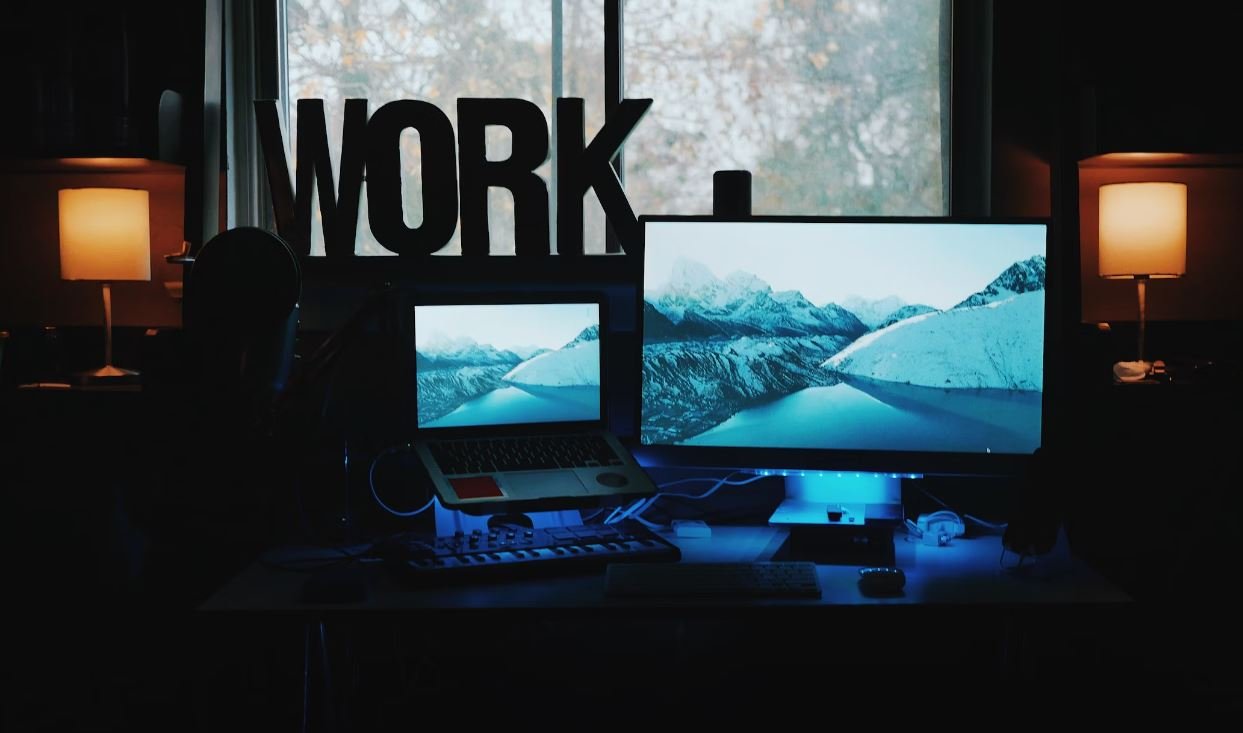Creator Platforms
Creator platforms have revolutionized the way individuals can create and monetize their digital content. These platforms provide creators with the tools and resources they need to reach a wider audience, engage with their fans, and generate income from their creative work.
Key Takeaways
- Creator platforms empower individuals to create and monetize digital content.
- These platforms offer tools for audience engagement and income generation.
- Creators can access a wide range of resources and communities to support their work.
How Creator Platforms Work
Creator platforms provide a range of features and services to support creators in their journey. From website builders and customizable templates to content management systems and marketing tools, these platforms offer a comprehensive suite of resources that empower creators to showcase their work in the best possible way.
In addition to providing tools for content creation and dissemination, **creators can also leverage audience engagement features such as commenting systems, social media integration, and email marketing** to build a loyal community around their work. Moreover, many **platforms offer monetization options such as advertising, subscription-based models, and merchandise sales**. This allows creators to generate income from their content and turn their passion into a sustainable business.
The Benefits of Creator Platforms
By utilizing creator platforms, individuals can enjoy a range of benefits that enhance their creative endeavors and professional growth. These benefits include:
- **Access to a global audience**: Creator platforms provide a platform for creators to reach a vast and diverse audience, enabling them to share their work with people from all over the world.
- **Community support**: Many platforms foster a sense of community among creators, offering forums, groups, and collaborations to connect with like-minded individuals and gain valuable feedback and support.
- **Streamlined monetization**: Creator platforms simplify the process of monetization by providing built-in tools and integrations, saving creators time and effort in setting up and managing various revenue streams.
Overall, these **platforms empower creators to focus on their craft while providing the necessary infrastructure and support for success**.
Comparison of Popular Creator Platforms
There are a variety of creator platforms available, each with its own unique features and benefits. Here’s a comparison of some popular options:
| Platform | Features | Monetization Options |
|---|---|---|
| WordPress | Website builder, customizable themes, content management system | Advertising, e-commerce, membership subscriptions |
| YouTube | Video hosting, editing tools, analytics | Advertising, channel memberships, merchandise shelf |
| Patreon | Membership platform, exclusive content access, community features | Recurring subscriptions, merchandise sales, digital downloads |
Building a Successful Creator Brand
While creator platforms offer a wealth of tools and opportunities, building a successful creator brand requires strategic planning and consistent effort. Here are some key factors to consider:
- **Identify your niche**: Find a unique voice and focus on a specific niche to stand out in a crowded online landscape.
- **Engage with your audience**: Actively interact with your audience through comments, social media, and live events to build a loyal community.
- **Diversify your revenue streams**: Explore multiple ways to monetize your content, such as sponsorships, brand collaborations, and merchandise sales.
- **Continuously improve your skills**: Invest in learning and honing your craft through courses, workshops, and self-study to stay ahead of the competition.
Conclusion
Creator platforms have revolutionized the way individuals create and monetize digital content. By leveraging the features and resources provided by these platforms, creators can access a global audience, build a supportive community, and generate income from their work. Whether you’re a writer, artist, musician, or vlogger, creator platforms offer the tools and opportunities to turn your passion into a successful career.
Common Misconceptions
1. Creator Platforms are only for artists and designers
One common misconception about creator platforms is that they are only relevant for artists and designers. While it is true that many creators on these platforms are in the creative fields, such as graphic designers and musicians, creator platforms are not limited to these professions. There are creators from various other fields who use these platforms to showcase their work, share their expertise, or even monetize their content.
- Creators from fields like photography, writing, and cooking also use these platforms to reach a wider audience
- Professionals in niches like fitness, coding, and personal development can use creator platforms to share their knowledge
- Even small businesses can leverage these platforms to promote their products or services
2. Creator Platforms are only for famous individuals
Another misconception is that only famous individuals can benefit from creator platforms. While there are indeed well-known creators on these platforms, many successful creators started with no prior fame or following. Creator platforms provide equal opportunities for individuals to showcase their talents or share their expertise, regardless of their current fame or recognition.
- Creators can gain popularity and grow their following by consistently producing quality content
- Platforms often have features that help boost discoverability for new and emerging creators
- Collaborating or networking with other creators can also help increase visibility and reach
3. Creator Platforms require complex technical skills
Some people may believe that creating content and managing a presence on creator platforms require advanced technical skills. However, many creator platforms are designed to be user-friendly and accessible to individuals with varying levels of technical proficiency. They often provide intuitive interfaces and tools that simplify the process of uploading and sharing content.
- Creators can easily upload and manage their content through simple drag-and-drop interfaces
- Platform tutorials and resources are readily available to help creators navigate the process
- Basic technical skills like editing images or videos are often sufficient for getting started
4. Creator Platforms guarantee immediate success and financial reward
It is a misconception to think that joining a creator platform guarantees immediate success and financial reward. While some creators may achieve rapid growth or make substantial income, this is not the case for everyone. Building a successful presence on these platforms requires consistent effort, engaging content, and a bit of luck.
- Creators need to invest time and effort in consistently producing high-quality content
- Connecting with the audience and building a community takes time and nurturing
- Monetization on these platforms may vary depending on factors like audience size and engagement
5. Creator Platforms have limited creative freedom
There is a misconception that creator platforms restrict creative freedom due to guidelines and content regulations. While platforms do have policies to ensure a safe and inclusive environment, they generally provide creators with a considerable amount of creative freedom.
- Creators can choose the type of content they want to create and the topics they want to explore
- Content guidelines often focus on respectful and ethical practices rather than stifling creativity
- Creators can leverage their unique style and perspective to stand out and attract an audience
The Rise of Creator Platforms
The digital age has revolutionized the way content is both consumed and produced. Creator platforms have emerged as a powerful tool for individuals to showcase their talents and engage with a global audience. These platforms have paved the way for unprecedented opportunities and have transformed budding creators into household names. This article explores various aspects of creator platforms and highlights the incredible impact they have had on shaping the media landscape.
1. Top Creator Platforms by User Base
The table below showcases the top creator platforms based on their user base. These platforms have amassed millions of users worldwide, offering a diverse range of content across different domains.
| Platform | Number of Users (in millions) |
|---|---|
| TikTok | 689 |
| YouTube | 2,291 |
| 1,082 | |
| Twitch | 140 |
| OnlyFans | 130 |
2. Distribution of Creator Genres
Creator platforms cater to a wide range of genres. The table showcases the distribution of creators across various genres on popular platforms, providing insights into the diverse content available.
| Genre | Percentage of Creators |
|---|---|
| Fashion & Beauty | 25% |
| Gaming | 20% |
| Travel & Adventure | 15% |
| Cooking & Culinary | 10% |
| Arts & Crafts | 30% |
3. Growth of Influencer Marketing
The rise of creator platforms has provided fertile ground for influencer marketing. The table below showcases the exponential growth of influencer marketing expenditure, highlighting the trust and reach influencers can offer.
| Year | Global Expenditure (in billions) |
|---|---|
| 2016 | 1.7 |
| 2017 | 2.9 |
| 2018 | 4.6 |
| 2019 | 6.5 |
| 2020 | 9.7 |
4. Age Distribution of Active Creators
Creator platforms have attracted creators of various age groups. This table provides insights into the distribution of active creators based on age, depicting the platform’s appeal across generations.
| Age Group | Percentage of Active Creators |
|---|---|
| 18-24 | 40% |
| 25-34 | 35% |
| 35-44 | 15% |
| 45-54 | 8% |
| 55+ | 2% |
5. Geographic Distribution of Top Creators
Creator platforms have witnessed a global surge in talented individuals who have gained massive popularity. The table below illustrates the regional distribution of top creators, giving us a glimpse into their global reach.
| Region | Percentage of Top Creators |
|---|---|
| North America | 40% |
| Europe | 30% |
| Asia | 20% |
| Australia | 5% |
| Africa | 5% |
6. Monetization Opportunities for Creators
Creators on these platforms can generate income through various monetization opportunities. The table below highlights the primary income streams for creators, showcasing the financial rewards available.
| Income Stream | Percentage of Creators |
|---|---|
| Ad Revenue | 45% |
| Sponsorships/Branded Content | 35% |
| Merchandise Sales | 10% |
| Donations/Patronage | 5% |
| Subscriptions | 5% |
7. User Engagement Metrics
The success of creator platforms can be measured through various user engagement metrics. The table highlights key engagement indicators, providing insights into the audience’s interaction with creators.
| Metric | Average Engagement |
|---|---|
| Likes | 500 |
| Comments | 250 |
| Shares | 100 |
| Views | 5,000 |
| Watch Time (minutes) | 20 |
8. Creator Platform Market Share
Creator platforms fiercely compete for market share, driving innovation and enticing creators with unique features. The table below reveals the market share of prominent creator platforms, indicating the dominance of a few key players.
| Platform | Market Share |
|---|---|
| TikTok | 35% |
| YouTube | 30% |
| 20% | |
| Twitch | 10% |
| OnlyFans | 5% |
9. Future Growth Projections
Creator platforms show no sign of slowing down, with exponential growth projected in the coming years. The table showcases the estimated growth of creator platforms, underscoring their potential impact on the digital landscape.
| Year | Projected User Base (in millions) |
|---|---|
| 2022 | 3,000 |
| 2023 | 3,600 |
| 2024 | 4,200 |
| 2025 | 4,800 |
| 2026 | 5,500 |
10. Market Valuation of Creator Platforms
The success and potential of creator platforms have attracted significant investments, driving up their market valuation. The table below displays the market valuation of top creator platforms, demonstrating the confidence of investors.
| Platform | Market Valuation (in billions) |
|---|---|
| TikTok | 60 |
| YouTube | 160 |
| 100 | |
| Twitch | 50 |
| OnlyFans | 30 |
In today’s digital landscape, creator platforms have become instrumental in empowering individuals to share their content and resonate with audiences across the globe. The exponential growth, user engagement, and monetization opportunities offered by these platforms have revolutionized the way content is consumed and created. As the industry continues to evolve, creator platforms will undoubtedly play a pivotal role in shaping the future of media and entertainment.
Creator Platforms – Frequently Asked Questions
Question 1: What is a creator platform?
A creator platform is an online platform that allows individuals to create, publish, and monetize their own digital content, such as articles, videos, music, or artwork.
Question 2: How do creator platforms work?
Creator platforms provide users with the necessary tools and resources to create and share their content with a global audience. These platforms often include features like content management systems, analytics tools, payment processing, and social sharing capabilities.
Question 3: Can anyone become a creator on a platform?
Yes, most creator platforms are open to anyone who wants to share their creative work. However, some platforms may have specific guidelines or criteria for content quality and may require users to adhere to community guidelines and terms of service.
Question 4: How do creators make money on these platforms?
Creators can make money on these platforms through various monetization strategies, such as advertising revenue, sponsorship deals, merchandise sales, subscription models, or by offering their services for a fee.
Question 5: Are there any fees associated with using creator platforms?
While many creator platforms offer free access to their basic features, some may charge fees for premium features, enhanced analytics, or additional services. It’s important to review the platform’s pricing structure before signing up.
Question 6: Can creators retain ownership of their content on these platforms?
The ownership of content on creator platforms generally depends on the platform’s terms of service. Some platforms may require creators to grant certain rights to the platform, while others may allow creators to retain full ownership of their content.
Question 7: Are creator platforms suitable for beginners?
Yes, creator platforms are designed to be user-friendly and accessible to beginners. They often provide tutorials, support forums, and help centers to assist newcomers in getting started.
Question 8: Can creators collaborate with others on these platforms?
Yes, many creator platforms provide features that enable collaboration between creators. These features may include shared project spaces, messaging systems, or the ability to co-publish content with others.
Question 9: How can creators promote their content on these platforms?
Creators can promote their content on creator platforms through various means, including utilizing social media channels, engaging with their audience, optimizing their content for search engines, and collaborating with other creators for cross-promotion.
Question 10: Are there any legal considerations for creators on these platforms?
Yes, creators should be aware of copyright laws, intellectual property rights, and any other legal requirements related to their content when using creator platforms. It’s advisable to review the platform’s terms of service and consult legal professionals if needed.



